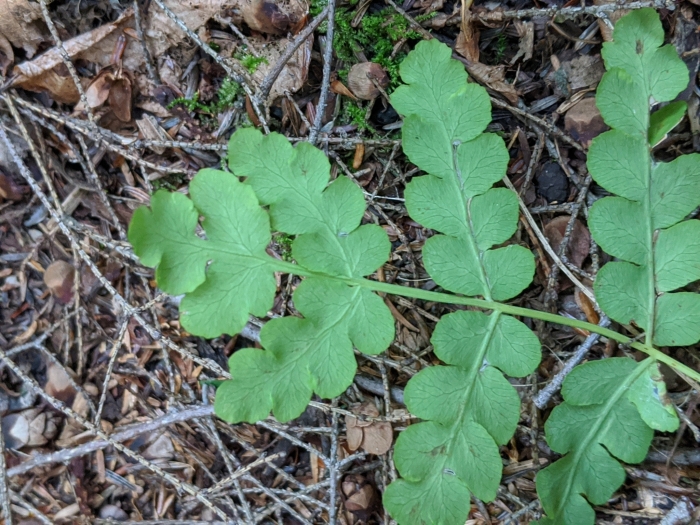Interrupted Fern
(Claytosmunda claytoniana)
Interrupted Fern (Claytosmunda claytoniana)
/
/

Benoit Renaud
CC BY 4.0
Image By:
Benoit Renaud
Recorded By:
Copyright:
CC BY 4.0
Copyright Notice:
Photo by: Benoit Renaud | License Type: CC BY 4.0 | License URL: http://creativecommons.org/licenses/by/4.0/ | Rights Holder: Benoit Renaud | Publisher: iNaturalist | Date Created: 2020-08-06T18:40:09-07:00 |




















Estimated Native Range
Summary
Claytosmunda claytoniana, commonly known as Interrupted Fern, is a deciduous perennial fern native to Eastern Asia, Eastern United States, and Eastern Canada. It is typically found in rich, moist, deciduous forests, often in shaded or semi-shaded areas with cool, damp soil conditions. This fern can reach 16-39 inches in height and 8-12 inches in width. Its fronds are bipinnate and have a unique appearance with a gap in the middle where the fertile leaflets, which produce spores, wither away after releasing them, giving the fern its common name.
Interrupted Fern is valued for its lush greenery and unique frond structure, making it a fascinating addition to shade gardens, woodland plantings, and naturalized areas. It is relatively low-maintenance, requiring consistently moist soil and protection from strong winds. The fern prefers acidic to neutral soil and can tolerate a range of light conditions from full shade to partial sun. While it is not prone to serious diseases or pests, it can suffer from rust if grown in poor conditions. Interrupted Fern is not known for aggressive roots or invasiveness, but it can form dense colonies over time through its rhizomes.CC BY-SA 4.0
Interrupted Fern is valued for its lush greenery and unique frond structure, making it a fascinating addition to shade gardens, woodland plantings, and naturalized areas. It is relatively low-maintenance, requiring consistently moist soil and protection from strong winds. The fern prefers acidic to neutral soil and can tolerate a range of light conditions from full shade to partial sun. While it is not prone to serious diseases or pests, it can suffer from rust if grown in poor conditions. Interrupted Fern is not known for aggressive roots or invasiveness, but it can form dense colonies over time through its rhizomes.CC BY-SA 4.0
Plant Description
- Plant Type: Ferns
- Height: 2-4 feet
- Width: 2-4 feet
- Growth Rate: Moderate
- Flower Color: N/A
- Flowering Season:
- Leaf Retention: Deciduous
Growth Requirements
- Sun: Part Shade
- Water: Medium
- Drainage: Slow
Common Uses
Border Plant, Deer Resistant, Low Maintenance, Water Garden
Natural Habitat
Native to rich, moist, deciduous forests in eastern North America
Other Names
Common Names: Clayton’s Sweet Fern , Clayton’s Fern , Clayton’s Flowering Fern
Scientific Names: Claytosmunda claytoniana , Osmunda basilaris , Osmunda claytoniana , Osmunda claytoniana f. claytoniana , Osmunda claytoniana f. dubia , Osmunda claytoniana f. tomentosa , Osmunda claytoniana var. dubia , Osmunda claytoniana var. vera , Osmunda interrupta , Osmunda monticola
GBIF Accepted Name: